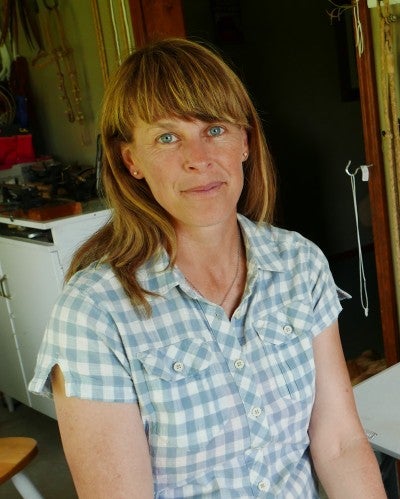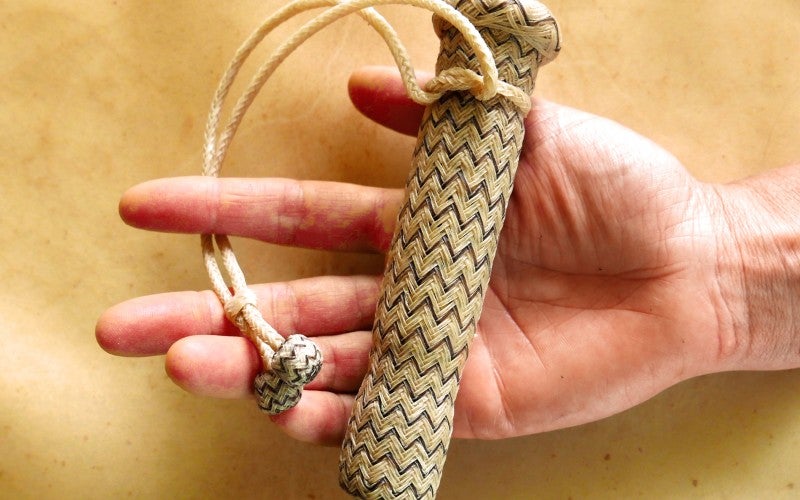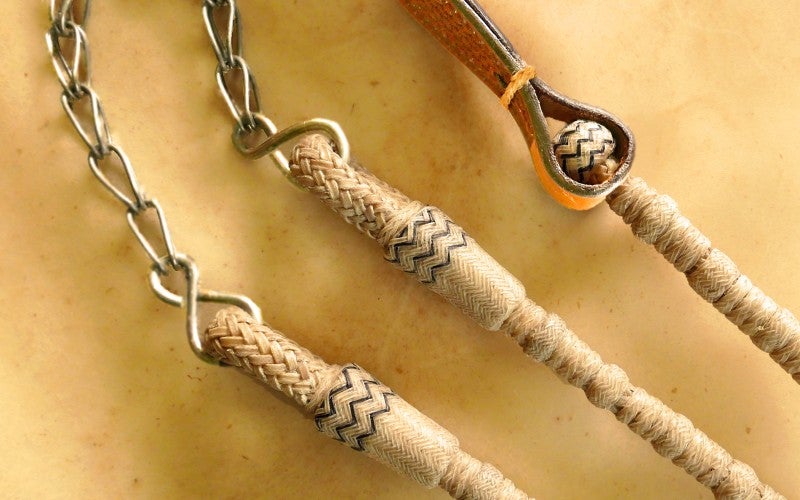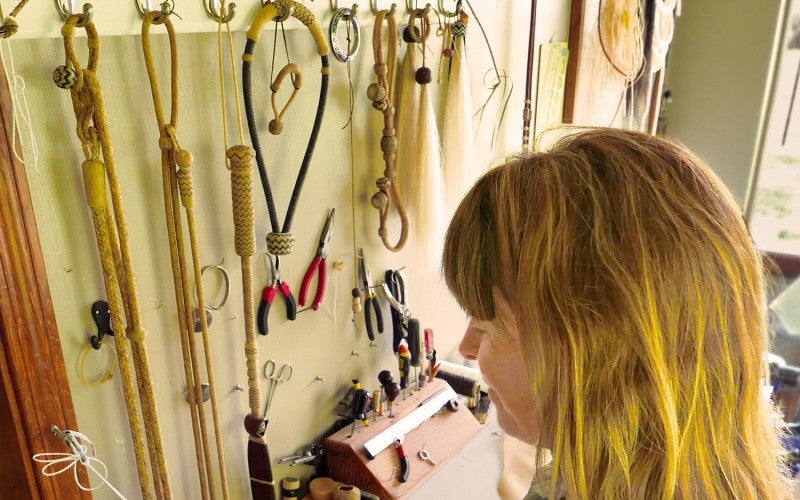Terri Berthelsen (Baker City) learned rawhide braiding as a cow wrangler looking after her family’s cattle. Today, her braided gear is prized for the tough hide she cuts perfectly into string, and her straight, tight weave that shows off her designs and reinforces the strength of her reins, quirts (short-handled riding “poppers” with braided leather lashes), and bosals (bridles).
Bio
Starting at 13, Terri Berthelsen spent her summers looking after her family’s cattle on a 20,000-acre Forest Service allotment high above the Burnt River Valley. She now works cattle for a local ranch family. “I never really got away from it; that’s my love and my passion.” As the light filters through the window of her workshop, Berthelsen explains the intricacies of rawhide braiding, one of the many skills necessary to ranching life. “When I was in high school I would braid baling twine,” Berthelsen recounted, “anything I could get my hands on…and then when I got married I just thought my hands have to be busy.” That prompted a visit to Gary Stark, a horse hair stitcher in Caldwell, Idaho, and later to Tim George, a rawhide braider in Pendleton. For more than a year, Berthelsen apprenticed with George. “He taught me how to really braid. He taught me how to do everything. All hats off to him.” Learning how best to cut the rawhide strings was difficult at first, but Berthelsen now makes her own, removing the flesh from the hide, drying it, then removing all the hair. She wears leather gloves with the finger tips cutoff to protect her hands. Berthelsen uses kangaroo rawhide, one of the strongest hides available, for the smallest strings. She cuts each string perfectly, keeping the same width and thickness. She braids the different patterns as tightly as possible, keeping the lines straight—all signs of a good braid. When she’s not busy gathering cattle on horseback, Berthelsen teaches others how to braid reins, quirts (short-handled riding “poppers” with braided leather lashes), bosals (bridles), and other types of gear.





